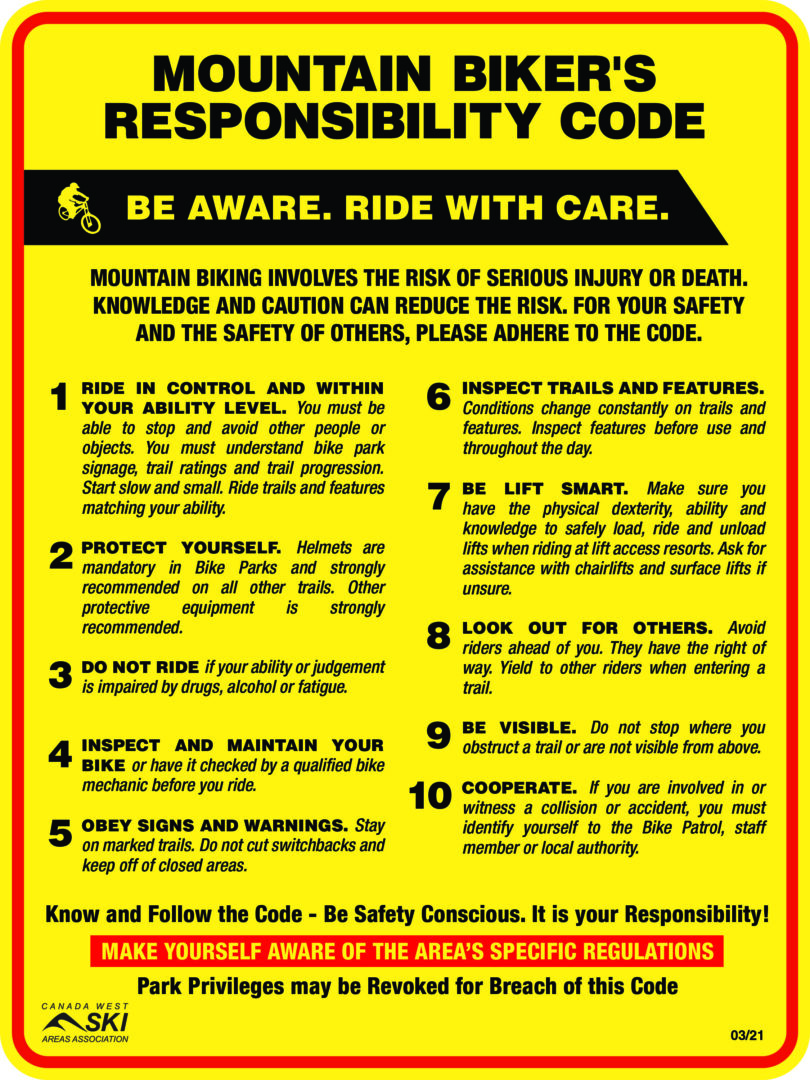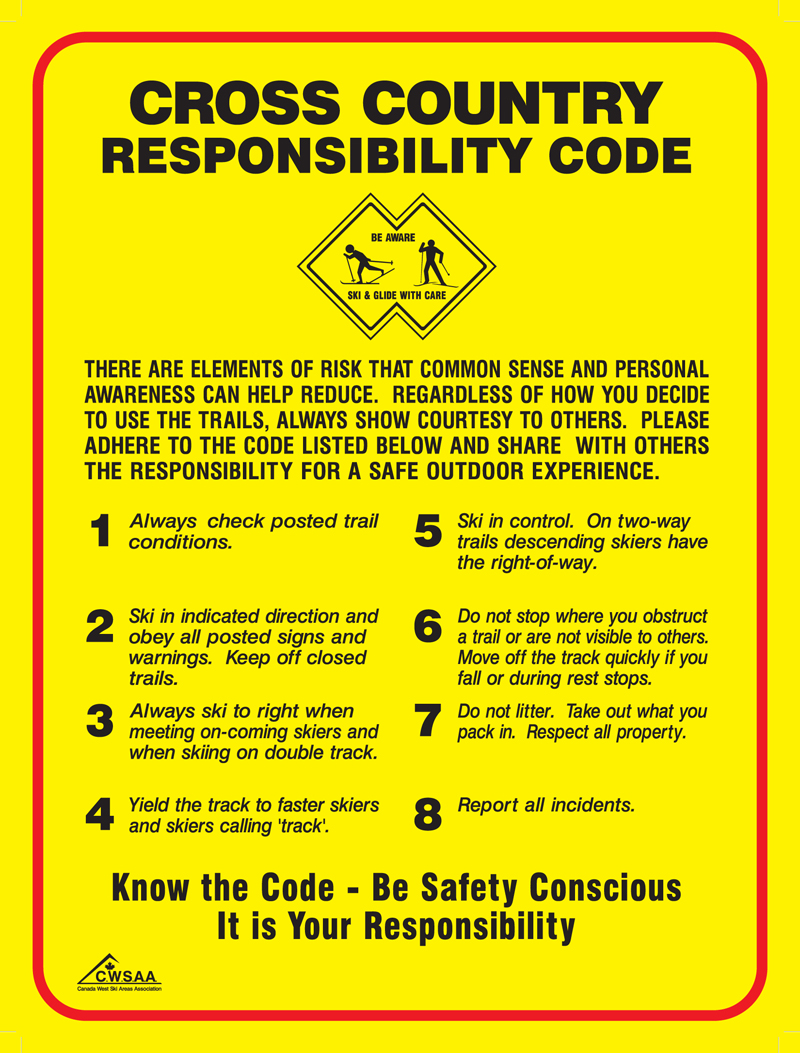Responsibility Codes
The Responsibility Codes provide the basic rules of conduct and must be followed by all using the terrain.
There are 3 Responsibility Codes consistent across all Ski Areas of Western Canada:
Alpine Responsibility Code, Mountain Biker's Responsibility Code & Cross Country Responsibility Code.
1.
Always stay in control. You must be able to stop or avoid people or objects.
2.
People ahead or downhill of you have the right-of-way. You must avoid them.
3. Stop only where you are visible from above and do not restrict traffic.
4. Look uphill and avoid others before starting downhill or entering a trail.
5. You must prevent runaway equipment.
1.
6.
Read and obey all signs, warnings and hazard markings.
7.
Keep off closed trails and out of closed areas.
8.
You must know how and be able to load, ride and unload lifts safely. If you need assistance, ask the lift attendant.
9.
Do not use lifts or terrain when impaired by alcohol or drugs.
10.
If you are involved in a collision or incident, share your contact information with each other and a ski area employee.
Know The Code
Learn more about the Alpine Responsibility Code
in this Video
Note this video was created based on the 2010 Alpine Responsibility Code, which has since been updated.
The Canada West Ski Areas Association recommends wearing helmets for skiing & riding.
Learn More about Choosing a Helmet
Snow Sports Helmets
Learn about important
Safety & Risk Awareness information:
Visit Skisafety.ca
1. RIDE IN CONTROL AND WITHIN YOUR ABILITY LEVEL. You must be able to stop and avoid other people or objects. You must understand bike park signage, trail ratings and trail progression. Start slow and small. Ride trails and features matching your ability.
2. PROTECT YOURSELF. Helmets are mandatory in Bike Parks and strongly recommended on all other trails. Other protective equipment is strongly recommended.
3. DO NOT RIDE if your ability or judgement is impaired by drugs, alcohol or fatigue.
4. INSPECT AND MAINTAIN YOUR BIKE or have it checked by a qualified bike mechanic before you ride.
5. OBEY SIGNS AND WARNINGS. Stay on marked trails. Do not cut switchbacks and keep off of closed areas.
6. RIDE IN CONTROL INSPECT TRAILS AND FEATURES. Conditions change constantly on trails and features. Inspect features before use and throughout the day.
7. RIDE IN CONTROL BE LIFT SMART. Make sure you have the physical dexterity, ability and knowledge to safely load, ride and unload lifts when riding at lift access resorts. Ask for assistance with chairlifts and surface lifts if unsure.
8. LOOK OUT FOR OTHERS. Avoid riders ahead of you. They have the right of way. Yield to other riders when entering a trail. Conditions change constantly on trails and features. Inspect features before use and throughout the day.
9. BE VISIBLE. Do not stop where you obstruct a trail or are not visible from above
10. COOPERATE. If you are involved in or witness a Collision or accident, you must identify yourself to the Bike Patrol, staff member or local authority.




